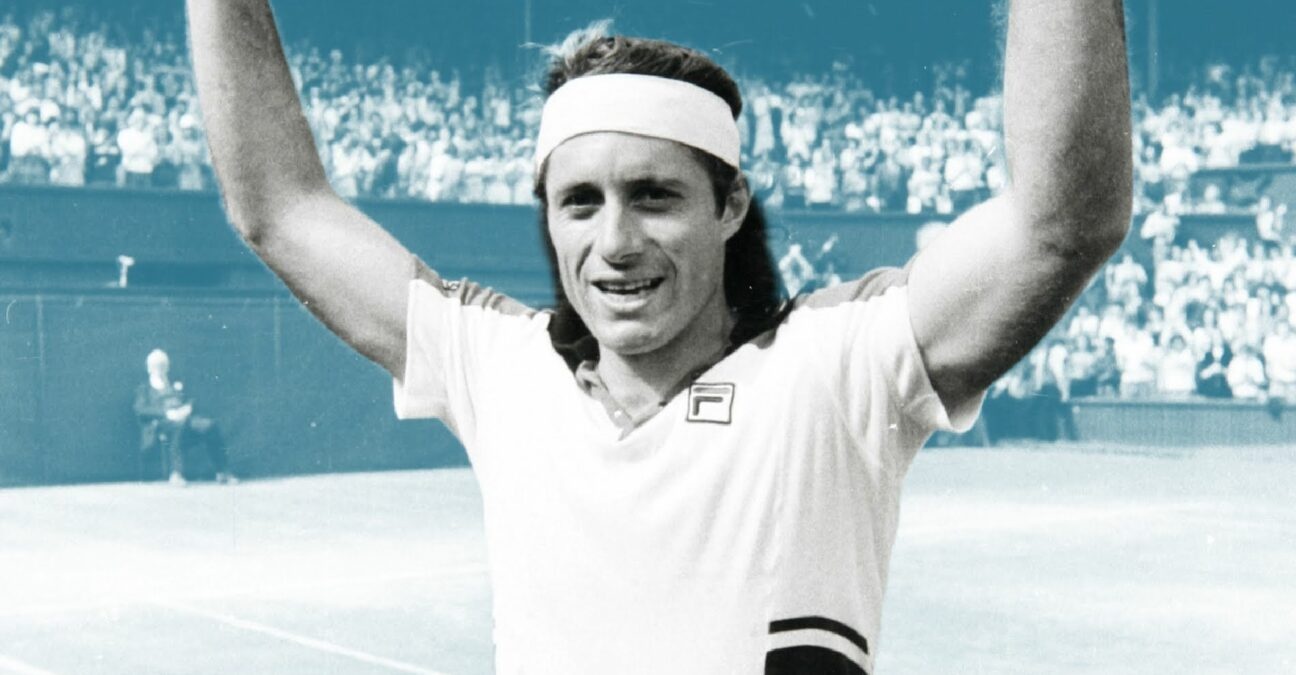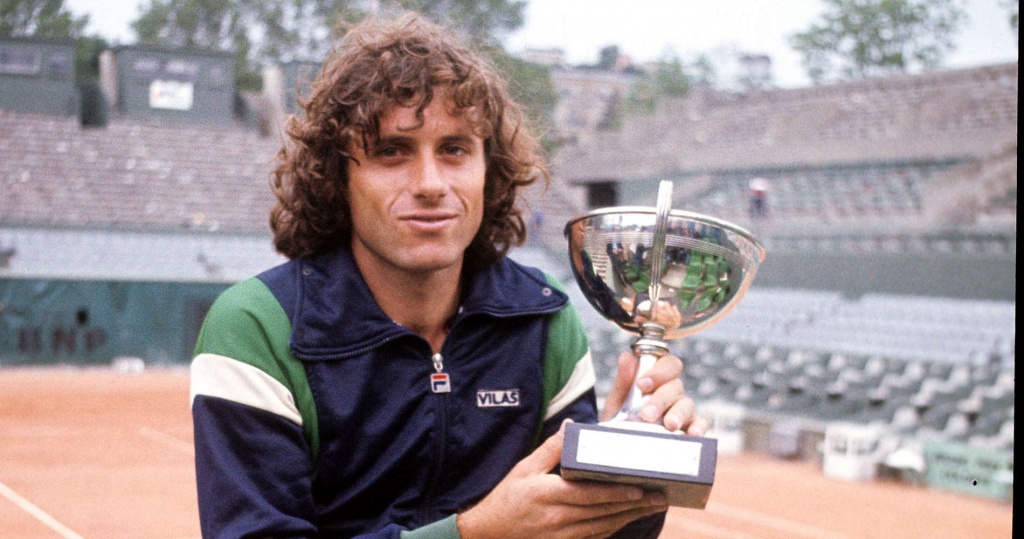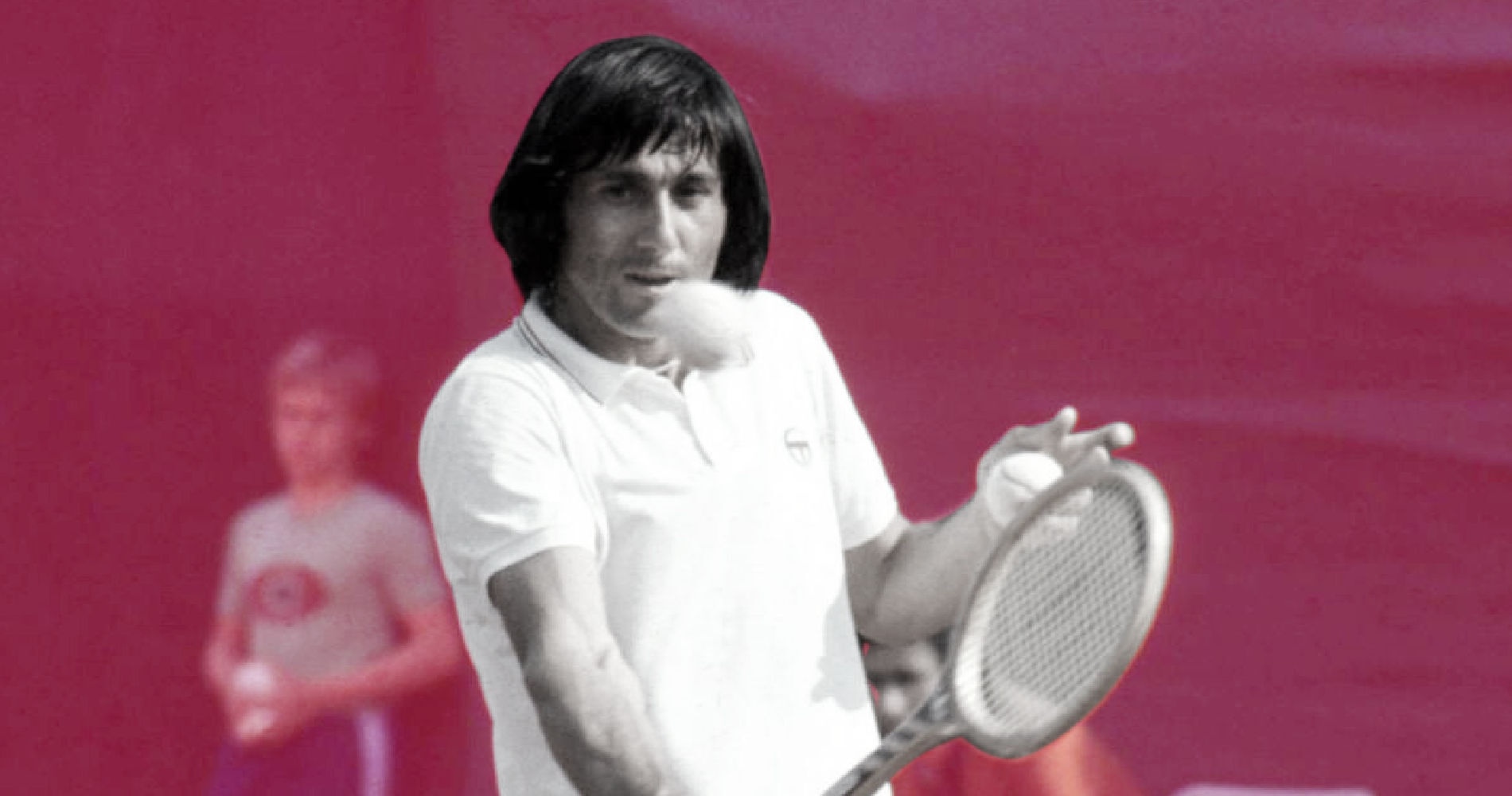January 2, 1980: The day Guillermo Vilas won his fourth and final Grand Slam title
Every day, Tennis Majors looks back at the most iconic moments in tennis history. On this day in 1980, Argentina’s Guillermo Vilas and American John Sadri faced off in the Australian Open final where they exchanged groundstrokes and.. fingers
 Guillermo Vilas OTD 01_02
Guillermo Vilas OTD 01_02
What exactly happened on that day?
On this day, January 2,1980, Guillermo Vilas claimed his fourth and final Grand Slam title, defeating the ill-tempered John Sadri in the final of the 1979 Australian Open (7-6, 6-3, 6-2). It was the Argentine’s second consecutive title in Melbourne, which was surprising for such a clay-court specialist, but at the time, the Australian Open draw was far from being as strong as the other Grand Slam draws.
The players: Guillermo Vilas and John Sadri
- Guillermo Vilas: The three-time Grand Slam champion from Argentina
Guillermo Vilas, from Argentina, was born in 1962. He made himself famous in 1974, winning seven titles, including the year-end Masters, where he defeated Ilie Nastase in the final (7-6, 6-2, 3-6, 3-6, 6-4). It was the only title he claimed that year on a surface other than clay, where his game was the most effective. Being left-handed, Vilas was one the first players to use massive topspin on both sides. In 1975, he reached the Roland-Garros final, losing to Bjorn Borg, the only player who could challenge him in long baseline rallies (6-2, 6-3, 6-4). After being defeated in the US Open semi-finals twice, in 1975 and 1976, Vilas reached his peak form in 1977.

That year, he dominated the game, winning16 titles, triumphing at Roland-Garros (destroying Brian Gottfried in the final, 6-0, 6-3, 6-0) and at Forest Hills, where he beat the local favourite Jimmy Connors (2-6, 6-3, 7-6, 6-0). On top of that, he reached the final at the Australian Open on grass, defeated by Roscoe Tanner in the final (6-3, 6-3, 6-3). He also set a new record, which would remain unbeaten for decades: a 53-match win streak on clay courts. Despite these great results, Vilas never officially ranked world No 1, which would create various controversies over time about the ranking system.
In 1978, the Argentine finished runner-up to Borg at Roland-Garros for a second time (6-1, 6-1, 6-3), but he managed to claim another Grand Slam title, defeating John Marks in the Australian Open final (6-4, 6-4, 3-6, 6-3). His 1979 season was disappointing, with no remarkable results in major tournaments, and in December, when the Australian Open began, he had been out of the top five for several months already, a first for him since 1974.
- John Sadri: The American with a powerful serve and temper
John Sadri, from the United States, was born in 1956 and was mostly known for his powerful serve and his shocking on-court behaviour. In 1978, he reached the final of the NCAA singles championships, defeated by John McEnroe (7-6, 7-6, 5-7, 7-6), and in 1979, his best result had been reaching the semi-finals in Tokyo (lost to Terri Moor, 6-4, 6-1). At the start of the Australian Open, he was ranked No 45 in the world.
The place: Kooyong, Melbourne
Unlike the other Grand Slam tournaments, the Australian Open (initially known as the Australasian Championships and, later, the Australian Championships) had moved location several times over the years. In fact, the event switched cities every year before it settled in Melbourne in 1972, and no fewer than five Australian cities had hosted the event at least three times: Melbourne, Sydney, Adelaide, Brisbane and Perth.
The event was held on grass at the Kooyong Stadium in a wealthy eastern suburb of Melbourne. Its position in the calendar had changed several times as well, between early December and January, going from being the first Grand Slam of the year to being the last. At the time, many of the best players skipped the Australian Open, mainly because of the remote location and the low prize money. The 1979 edition started at the end of December and ended on January 2, 1980.
The facts: John Sadri gives Guillermo Vilas the finger during the straight-sets loss
In 1979, Guillermo Vilas had his worst year on the tour since 1973. He had claimed only three titles, and his best Grand Slam performance had been reaching the quarter-finals at Roland-Garros. Now ranked No 6 in the world, he could still salvage his season by defending his Australian Open title. Although his game was usually more suitable for clay, the Argentine was the favourite in Melbourne, where he was the top seed, with the second seed John Alexander being ranked only No 18 in the world.
The defending champion made his way into the final, surviving a five-set thriller in the quarter-finals against the 1974 runner-up Phil Dent (6-2, 3-6, 7-6, 4-6, 6-2). On January 2, in the final, he faced Sadri, from the United States, who had drawn attention to himself the entire week with his shocking behaviour. After his semi-final win against Colin Dibley, he was fined for obscene gestures and language, as well as smashing an icebox with his racquet. After a close first set, finally won 7-6 by Vilas, the Argentine outplayed Sadri in the following sets, 6-3, 6-2. During this heavy loss, the American managed to make another obscene gesture, a finger aimed at his opponent, who placidly returned it.
“There are persons that are born stupid,” Vilas said later, according to The New York Times. “If he does those things, he may be funny, but he will have to try a little better to make me laugh.”
What next? Vilas reaches one more Grand Slam final while Sadri reaches the top 15
Vilas would reach one more final at Roland-Garros, defeated by Mats Wilander in 1982 (1-6, 7-6, 6-0, 6-4), and in 1981, he would lead his country to the Davis Cup final (lost to the United States).
He would achieve his last remarkable performance at the French Open in 1986, reaching the quarter-finals (defeated by Johan Kriek, 3-6, 7-6, 7-6, 7-6). In 2015, a journalist, Eduardo Puppo, would claim that Vilas should have been ranked world No 1 for five weeks, but the ATP has yet to acknowledge the claim.
Sadri would claim the first of his two career-titles the following week, in Auckland where he beat Tim Wilkison in the final (6-4, 3-6, 6-3, 6-4). During his career, he would climb as high as world No 14, in 1980, the same year he was defeated by Vilas in the Australian Open quarter-finals. He would reach the Grand Slam quarter-final stage one last time at Wimbledon in 1984, defeated by John McEnroe (6-3, 6-3, 6-1).







